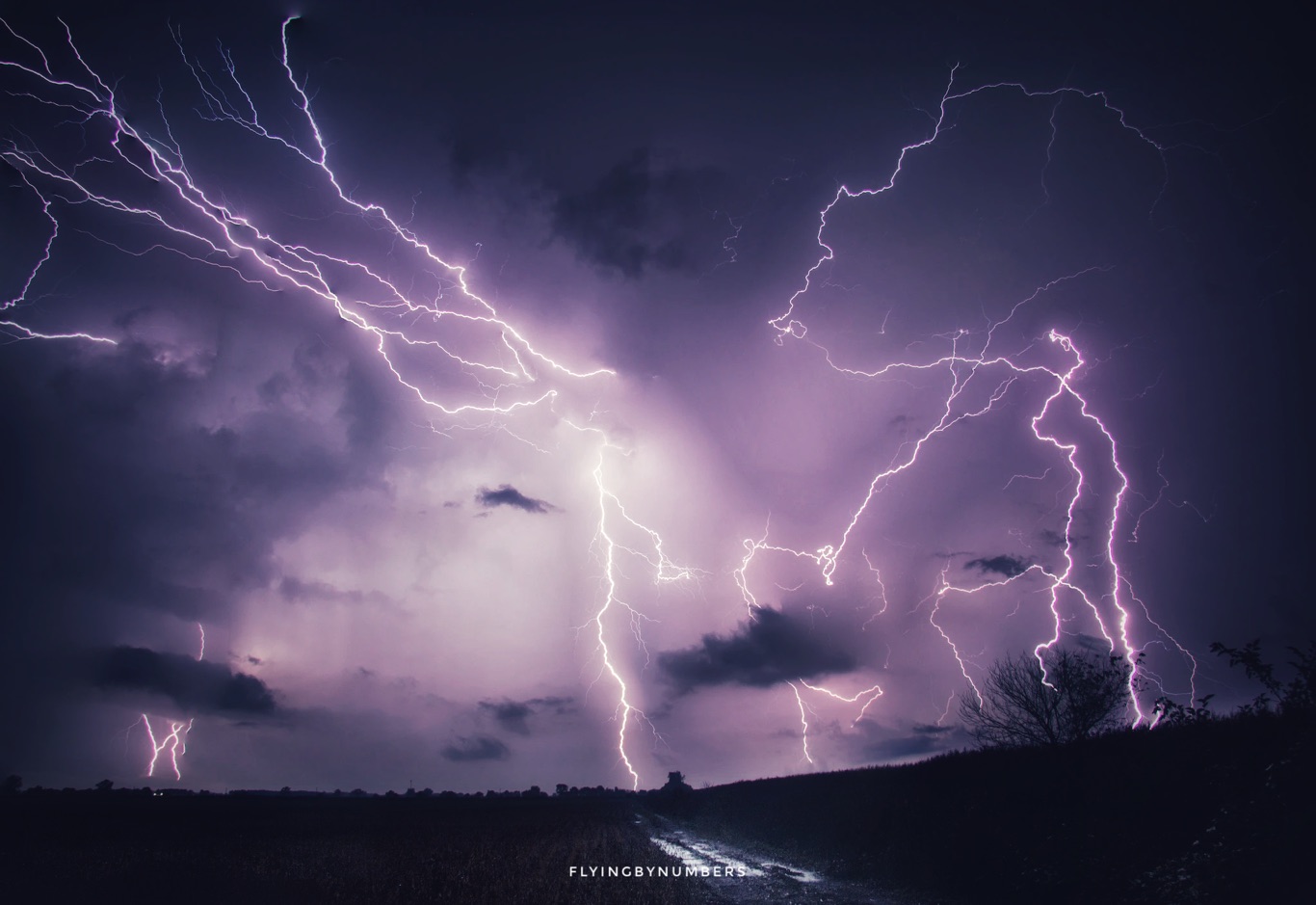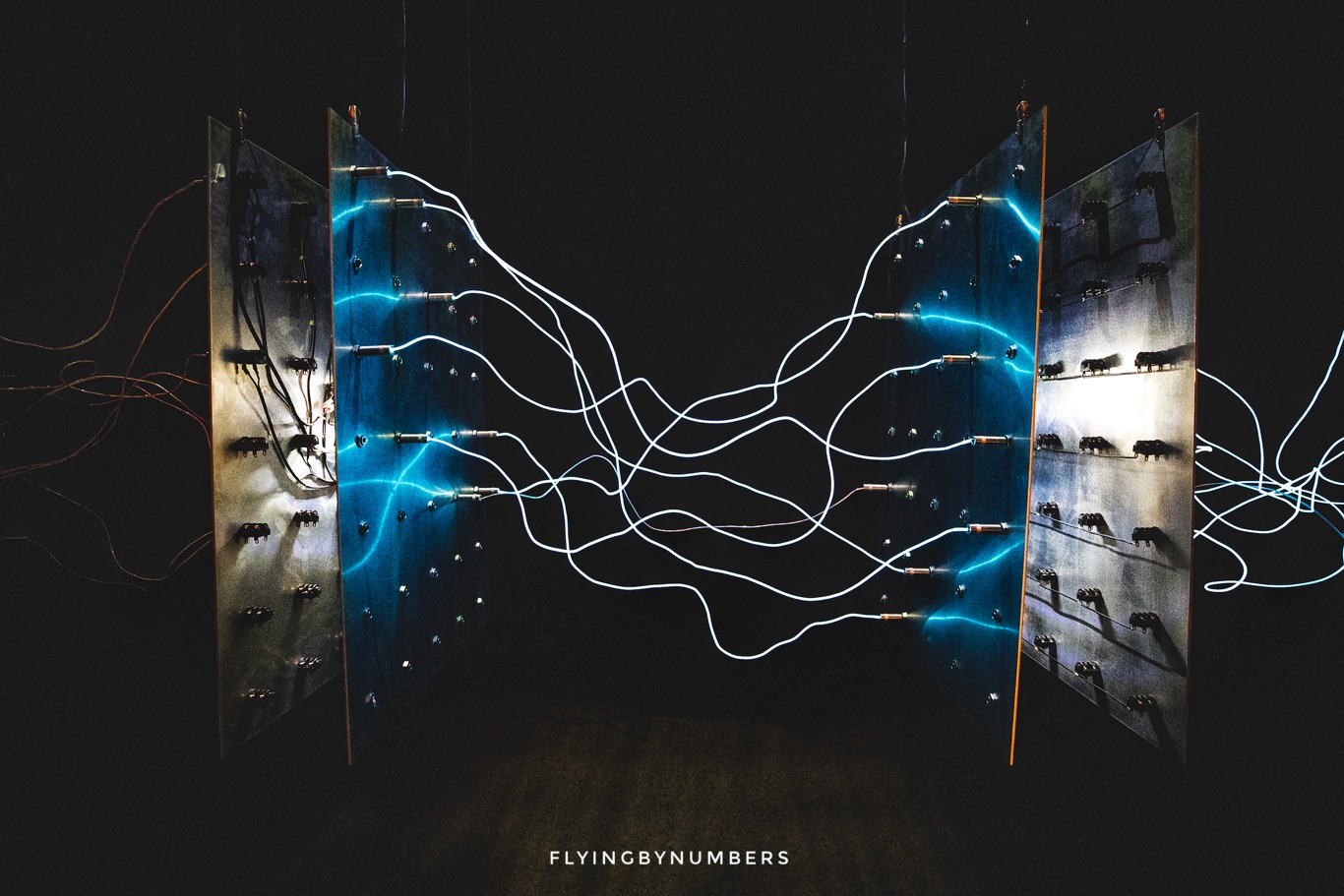Here at Flyingbynumbers, “What happens when a plane gets hit by lightning?” alongside, “Is lightning dangerous for aircraft?” Are two of our most user requested questions…
And for a good reason. We appreciate when you’re happily cruising along watching an inflight movie, the last thing you want is to see a bolt of lightning hit your aeroplane. But, take some comfort, this dazzling spectacle is not as dangerous as you might think. And, in fact, planes getting hit by lightning happens far more often than you’d imagine.
We will have a closer look at what happens when a plane is hit by lightning, the frequency of these electrifying events, and whether this could bring down an aircraft.
By the end of this article, nervous fliers should come away with a newfound understanding, and — hopefully — reassurance!

What happens when a plane is hit by lightning?
Commercial aircraft fly through — but more typically, around — stormy weather on virtually every flight. With this in mind, lightning strikes are actually fairly common occurrences. However, thanks to modern engineering, the passengers and crew inside the plane are typically unaffected.
For all but the most severe of lightning strikes, most passengers won’t even notice if their aircraft is struck.
When lightning hits an aircraft, it usually attaches to a pointy part of the plane — regularly an extremity like the nose, or a wing tip. The electrical charge then travels along the aeroplane’s skin before exiting another extremity, such as the tail and antenna located on the rear fuselage area.
Some passengers and crew inside the plane nearby the entry and exit points may notice the effects of a lightning strike — typically hearing a loud bang, and potentially even feeling the static electricity. Yet, these passengers certainly won’t get shocked!
This is possible because aircraft fuselages, are made of conductive materials like aluminium, which allows the lightning’s electricity to quickly move along the surface of the plane and not penetrate the inside.
This effect is known as the Faraday Cage effect, named after the renowned scientist Michael Faraday.
It is a phenomenon in physics where an enclosed conductor (in our case, the aircraft fuselage) distributes an electric charge or electromagnetic fields around its exterior, thereby protecting its interior from those very forces.

What about newer, carbon fibre aircraft?
When thinking about the Faraday Cage effect, we typically default to metal cages. However, this effect works with any material that can conduct electricity.
So, even newer aircraft with composite fuselages, like the Boeing 787, still function effectively as Faraday cages. While it’s true that composite materials aren’t as naturally conductive as the aluminium used in traditional aeroplane construction, engineers have developed ways to ensure these aircraft still offer the same level of protection against lightning strikes.
To create a conductive path, metal is placed in the composite aircraft’s outer skin — typically a fine, lightweight mesh or foil embedded in a surfacing film, or wire embedded within the outer laminate ply
Lightning strike protection strategies for composite aircraft — Composites World

One common method is to embed a conductive layer, often a mesh made of conductive fibres, within the composite material during the construction process. This conductive layer enables the electrical charge from a lightning strike to spread across the aircraft’s surface, preventing the charge from penetrating the interior, just as it would in a traditionally constructed aircraft.
The aircraft’s sensitive electronic systems are also protected from potential interference caused by the lightning strike, and “high risk” areas such as the nose cone and fuel tanks receive additional protection measures.
All aircraft, regardless of the materials used in their construction, must meet strict safety standards that include the ability to withstand lightning strikes. These requirements ensure that all planes function as effective Faraday cages, safeguarding passengers and sensitive onboard equipment from the potentially damaging effects of lightning strikes.
Can Lightning Bring Down a Plane?
The last major crash attributed to a lightning strike was way back in 1963 involving a now defunct airline, Pan Am, and a now retired plane, the B707. The subsequent investigation found that the lightning strike ignited fuel vapour in the aircraft’s fuel tanks, causing Pan Am’s first fatal accident with a jet aircraft.
Since then, planes have been designed with lightning in mind, and major improvements in aviation technology have made these incidents extremely rare. In fact, lightning hasn’t been the primary cause of a plane crash in the U.S. for over 60 years.
The accident heralded in a whole raft of additional safety measures, and the construction techniques of modern aircraft fuel tanks are now incomparable.


The long and short of it is, modern aircraft are built to withstand lightning strikes.
And, on the subject of fuel vapours, modern commercial aircraft even have inbuilt nitrogen generation systems. These fill any space in the fuel tanks with inert nitrogen gas, reducing any fuel vapour.
You’re looking at a Nitrogen Generation System, installed in the right main landing gear bay of a 737 MAX.
— KC-10 Driver ✈️ 👨✈️ B-737 Wrangler (@MCCCANM) December 19, 2022
(Top of the left main landing gear is visible, bottom right)
What does it do? Why do we need nitrogen?
A two-minute 🧵… pic.twitter.com/cPAfY0I08x
Summary: Lightning Is An Electrifying Spectacle, Not a Threat
There is no doubt that lightning hitting a commercial aircraft remains an electrifying spectacle. Passengers and crew will occasionally hear a loud noise, feel a heightened sense of static electricity, and potentially even experience an electrical burning smell. Generally, though, it’s unlikely passengers will even notice the aircraft has been hit by lightning.
Even in the rare case passengers sense a severe lightning strike, there’s little reason for alarm. In fact, such an event is a surprisingly common part of commercial aviation, with each commercial airliner being struck about once per year. Thanks to robust design principles and stringent safety regulations, modern aircraft are more than capable of withstanding these strikes with little if any residual damage.
The external shell of an aeroplane acts like a Faraday cage, distributing the electrical charge around the surface and preventing it from reaching the interior. This is true whether the plane is made of traditional conductive materials like aluminium or newer composite materials.
And that’s not all! After a plane is hit by lightning, it undergoes a thorough inspection to check for potential damage. These inspections ensure the plane remains in peak operating condition and that any damage, although unlikely, is promptly repaired.
In conclusion, the fear of lightning strikes should not deter you from enjoying your flight. Remember, the next time your plane is hit by lightning, you’re witnessing a dazzling display of nature’s power, safely from one of the most secure places – inside an aeroplane.





